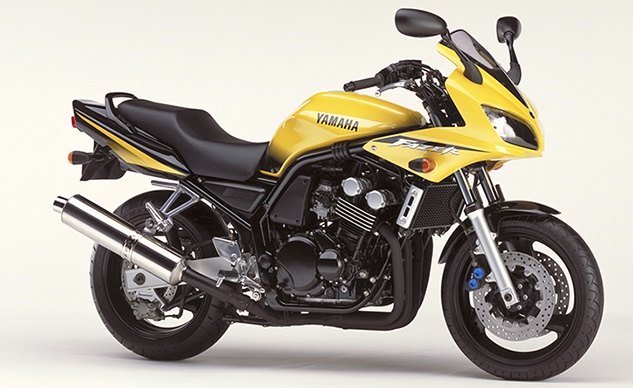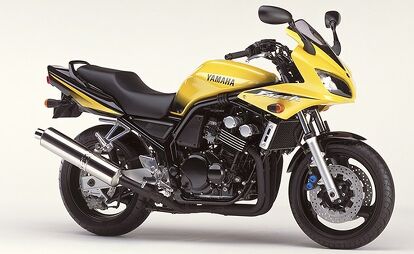Ask MO Anything: Replacing Rubber Intake Manifolds
Relax, it's not as bad as it looks
Dear MOby,
The carb inlet rubbers on my FZS600 are cracked and have been for some time. I’m thinking of trying to change them myself. I do the usual servicing on the bike, however this looks a lot more difficult. Do you have any advice on the best way of doing this?
Joe French
Somewhere European
Dear Joe,
It looks a lot more difficult because it is. I’ve never attempted this on a Yamaha FZ6S, as I don’t think they were even imported to the US. But I certainly recognize the type. One of my first bikes was an early ’80s Suzuki GS550M, and my early efforts to tune it to a standstill included constant fiddling with its carburetors, which meant completely removing the whole bank of four repeatedly. Once the carbs are out (once you’ve done it a few times, it’s not nearly as bad as it looks), it’s a really simple matter to unbolt those rubber manifolds and replace them.
Just as with your Yamaha, it would appear to be impossible to get the carbs out, as they’re wedged between the engine in front and the airbox (which is wedged against two steel frame tubes) behind. It really is doable, though: Unlike some exotic European brands, the Japanese wouldn’t dream of building a bike you couldn’t service without completely disassembling it.
Apparently you haven’t got a manual or you wouldn’t be writing MO, which is only fitting since when I had the Suzuki, I didn’t know there was such a thing as a manual, and if I had known, $40.95 would’ve been unthinkable. In the age of the internet, though, the $14.95 Haynes wants for the online version is probably well worth the investment.
Basically, the fact that the carburetors are mounted in rubber manifolds from carb to engine (1 and 2, Joint, Carburetor) and from airbox to carburetor (20, Joint, Air cleaner) means there’s more wiggle room in there than it would appear. Once you’ve loosened all the hose clamps that hold everything together, along with all the other stuff that’s in the way, you’ll find it’s a simple case of wiggling the bank of carbs around until you can pull them far enough out of the way to replace all the rubber manifolds, and by wiggling I mean often with the aid of levers including big flat-blade screwdrivers and tire irons or whatever you’ve got.
You should be able to slide the airbox a bit to the rear if you can spot where it’s attached to the frame somewhere, which it probably is, as the Japanese are also not going to leave all the weight of those carbs and airbox unsupported somewhere back in there. (This is another engineering principle I was not aware of when I owned my Katana.)
If your old rubber manifolds are old and hard and cracked, it’s definitely a thing that needs doing since, of course, any air that leaks in between carburetor and intake valve is going to result in a lean mixture, and that’s not good. If your bike idles higher than normal sometimes, or doesn’t return to idle when you close the throttle, those are sure signs.
Giving everything a spray with WD-40 or similar the day before should make the task easier and greasier. Before reassembly, a nice silicone lubricant like this stuff will ease the pain.
The beauty is that replacing those hard old manifolds with nice new pliable ones, means assembly will be easier than disassembly. And a light spritzing of those rubber parts from time to time with that silicone lube supposedly will prolong their life so you won’t have to perform this task again in yours.
Congratulations on keeping a carbureted bike alive. If she’s not running like her old self, now is of course the time to give those carburetors a good cleaning, preferably in a nice ultrasonic tank if possible. Soon you’ll be like all the cool old people who aren’t just rediscovering vinyl albums, but never abandoned them in the first place. Good luck.
Become a Motorcycle.com insider. Get the latest motorcycle news first by subscribing to our newsletter here.
We are committed to finding, researching, and recommending the best products. We earn commissions from purchases you make using the retail links in our product reviews. Learn more about how this works.
More by John Burns


































Comments
Join the conversation
"Unlike some exotic European brands, the Japanese wouldn’t dream of building a bike you couldn’t service without completely disassembling it."
Except for the Honda Magna where you need to remove the rear wheel to get at the fuel filter. LOL. And you need pull the engine to get at the rear head pipes. And.. and ...and..
Had to rebuild the carbs on an old 1986 Honda CB 700 Nighthawk a while back. Practically had to use a hockey stick to lever them off the intake boots. Quoth the Raven: NEVERMORE!